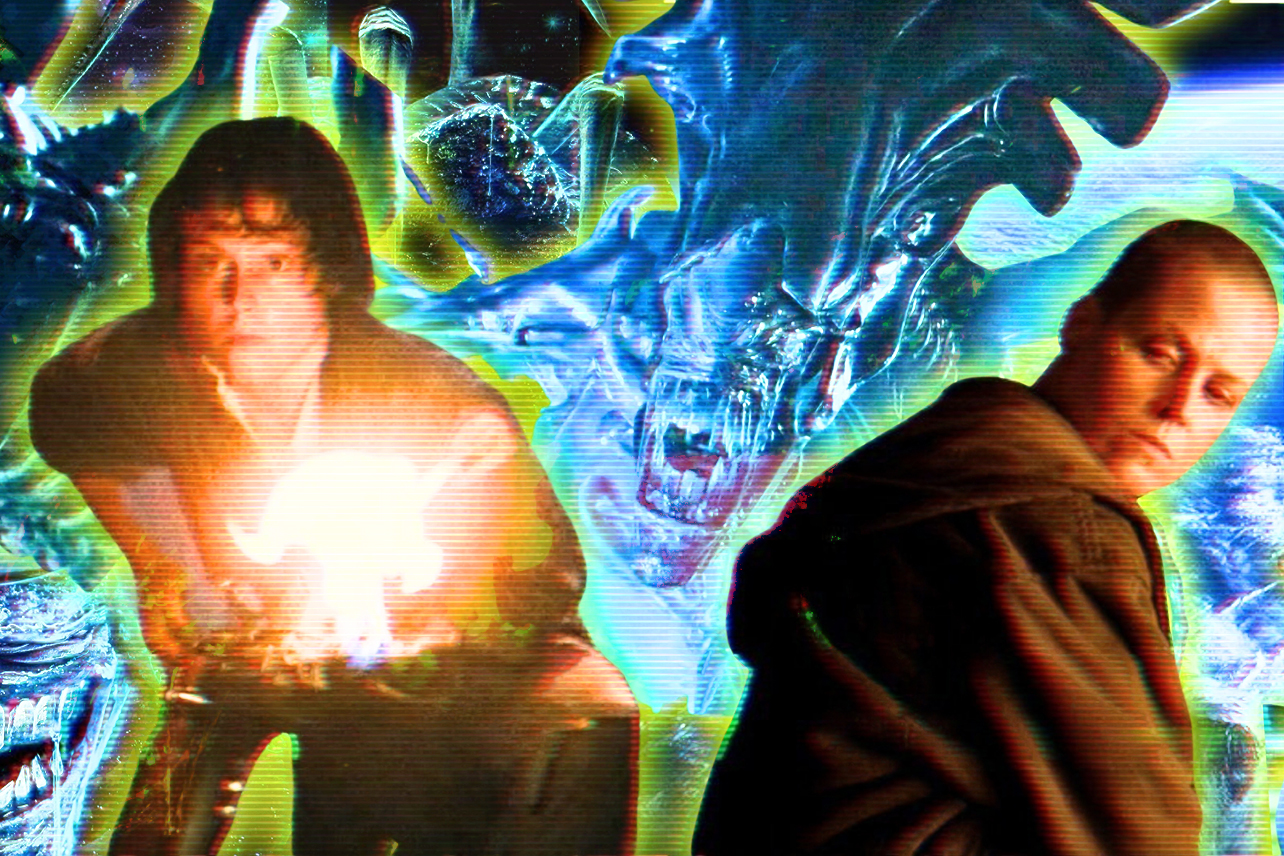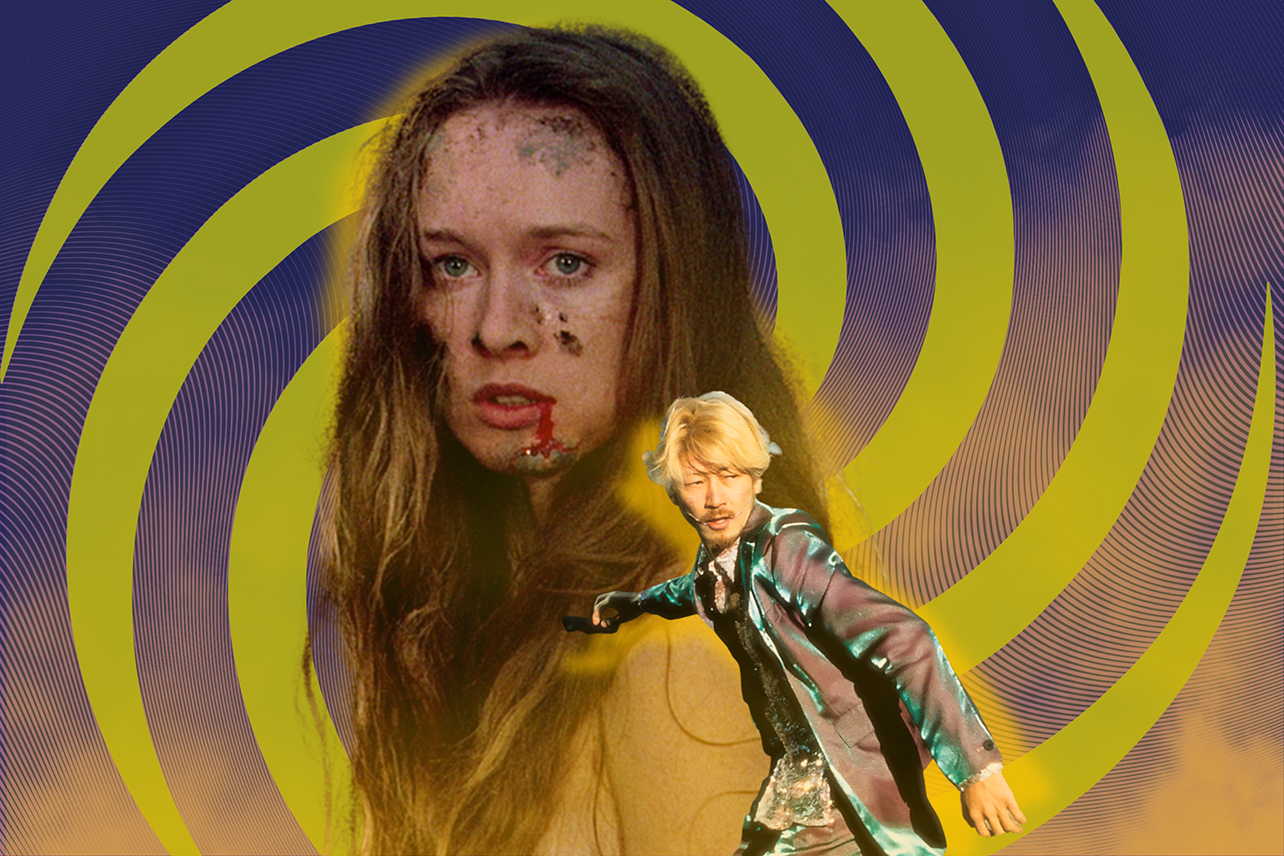Alien: Earth, the latest installment in the Alien franchise, launches this month, kicking off the first-ever TV adaptation of the sci-fi-horror icon first brought to life by director Ridley Scott in 1979. It's the latest chapter in a story that's been unfolding onscreen for more than 45 years, but it started as the story of one woman who simply refused to die.
Alien is remembered for a lot of things, but one of its greatest lasting legacies is the character of Ellen Ripley, played by Sigourney Weaver. A spacefaring corporate employee who finds herself embroiled in unimaginable terror, Ripley's story unfolded across four films released between 1979 and 1997 now known, thanks to box set branding, as the "Alien Quadrilogy."
Is a "Quadrilogy" a real thing? Maybe not, but even as the Alien franchise continues to grow and expand, Ripley's story will forever stand out, no matter how weird it got toward the end. And believe me, it got weird. It got really weird.
So, as part of a series of Alien primers here at Pop Heist, let's take a look back at the entire Quadrilogy, and Ellen Ripley's long life (and afterlife).
What is Alien?
I am so glad you asked, person who somehow doesn't have this information yet! Alien is a 1979 sci-fi horror film directed by Ridley Scott and written by Dan O'Bannon and Ronald Shusett. It's the story of a spaceship crew who get an unexpected wake-up call out of hypersleep to investigate a mysterious signal on a nearby planetoid.
When they get there, this crew — including legendary actors like John Hurt, Tom Skerritt, Veronica Cartwright, Harry Dean Stanton, Yaphet Kotto, and Ian Holm — find mysterious alien eggs, one of which latches onto a crew member. When the crew brings their wounded comrade back to the ship, an alien creature ultimately bursts from his chest. Mayhem ensues, and it's up to Ellen Ripley to find a way to survive and get back home to Earth.
Often described as a "haunted house movie in space" and famed for its tension and dirty space aesthetics, which created a live-in feel, Alien features creature designs by the great H.R. Giger, a star-making performance for Weaver, and some of the scariest moments in any horror movie. Plus its tagline — "In space no one can hear you scream" — remains undefeated. Oh, and the teaser trailer is incredible.
It's Alien! Come on, you know Alien!
Okay, I do know Alien, but why is it so important?
Alien arrived at a time when Hollywood was still in the wake of the tremendous immediate success of Star Wars, and studios everywhere were looking for the next spacefaring adventure film that would prove a hit with audiences. There were a lot of imitators and a lot of twists, but Alien — ironically released by Star Wars studio 20th Century Fox and not a competitor — was the best film of its era to play in that space, taking the lived-in, "dirty space" look of Star Wars and giving it a darker, horror edge. It was revolutionary in the way it portrayed aliens as monstrous, destructive beings of pure cosmic appetite, and served as a breakthrough film for a number of people, including Scott, Weaver, and O'Bannon. Plus, the title creature was an instant icon.
And what is the title creature?
You've probably seen the alien in its final form: A humanoid, black body with an elongated, phallic head and two sets of metallic teeth, one hidden inside the other. But it all begins with an alien egg, a massive avocado-looking thing that houses a creature known as a "facehugger."
The facehugger does … well, exactly what it sounds like it does, and in the process implants an embryonic alien in a living host, usually a human in the franchise but really any warm body. That embryo form grows until it's big enough to burst out of its host's chest, and then grows with astonishing rapidity into a fully formed alien monster.
There are variations on this (more on those later), but that's the basic idea, and yes, it's as terrifying as it sounds.
Got it. What about the sequels?
Well, the sequels begin seven years after Alien with one of the greatest movies of the 1980s (or, really, ever): James Cameron's Aliens. The film picks up 57 years after the original, when Ripley wakes up from hypersleep having survived her ordeal, and returns to Earth. Once there, she learns that the planetoid where her crew found the alien has since been terraformed and colonized, but oh shit, the colony's stopped communicating with Earth. What could have possibly happened?
Ripley's pretty convinced she knows, which is why she's tasked with heading out to the colony with a company of "Colonial Marines," soldiers who are ready to exterminate anything that gets in their way. Of course, they're not prepared for what happens when it's not just one alien, but dozens of them, including the now-iconic alien queen.
With the franchise in his hands, Cameron, who also wrote the screenplay, took the aesthetics of Scott's film, along with its themes of corporate control and body horror, and added intense, guns-blazing action to the mix. Creature legend Stan Winston designed the effects, James Horner wrote one of the best scores of the era, and the Colonial Marines were assembled from a crew of eventual icons like Michael Biehn, Bill Paxton, and Lance Henriksen.
Just as importantly, Aliens added to the franchise by giving Ridley a newly tragic backstory. She had a daughter who was still a child when she left Earth, but has since grown old and died in her absence. That leads Ripley to form an intense bond with the lone survivor of the colony, a little girl known as Newt (Carrie Henn), and form a king of surrogate family with Newt and Biehn's character, Marine Corporal Hicks. This bond leads to the franchise's most famous line — "Get away from her, you bitch!" — as Ripley battles the alien queen.
This is also where the alien gets a name other than "the alien," when the marines are told they're hunting "a Xenomorph."
It's not just one of the best sci-fi horror movies of all time, but one of the best action movies too!
Wow, they must have really had to work hard to top that one!
Well … they tried? It was another six years before the third Alien film arrived, after several false starts in its own version of development hell, and the Alien 3 we got was … well, it was strange. The film, directed by David Fincher in his feature directorial debut, picks up immediately after Aliens, promptly kills off everyone from the last film except Ripley, and takes the franchise lead to a grim penal colony planet where everyone's head is shaved … including hers.
How can it get any worse? Well, an alien facehugger happened to be onboard Ripley's ship when it crashed, and it gets loose and latches onto a dog, giving us a doglike alien creature that's a departure from the ones in the previous films. It is once again a fight for survival, as Ripley and the prisoners on the colony have no choice but to work together and fight back without the aid of conventional weaponry.
Sigourney Weaver agreed to come back for Alien 3, but on the condition that Ellen Ripley finally be killed off. The production obliged, devising a death in which Ripley realizes she has an alien embryo inside her, and forces the prisoners to promise to kill her if she helps them kill the alien. By the end of the film, both the dog-Xenomorph (Dogomorph? Xenodog?) and Ripley are dead, their bodies melted in the prison's foundry.
There are a lot of good ideas in Alien 3, and Fincher delivered some arresting visuals even amid studio recuts, but it's generally viewed as a step down from what came before.
So Ripley dies? That must be the end, right?
This is science fiction, baybee! Dead's never really dead when you can just invent a way to resurrect someone, and that's exactly what happened with the aptly titled Alien: Resurrection.
Set 200 years after Alien 3, the film follows the arrival of a Ripley clone who's been bred to grow an alien queen embryo inside her. The government wants to engineer and grow Xenomorphs because they'd like to find ways to use them for Understandable and Totally Not Suspicious Reasons.
The problem? The aliens they're breeding escape their enclosures on the research ship, and the Ripley clone has to team up with a band of mercenaries to stop the onslaught. Oh, and for extra fun, the Ripley clone has a little Xenomorph DNA in her that makes her stronger, faster, more ruthless, and for some reason really good at basketball.
It's got all the Alien action you'd expect, with Weaver clearly having fun playing a different version of Ripley, Winona Ryder as a synthetic being, and mercenaries played by the likes of Ron Perlman and Michael Wincott. Plus, French director Jean-Pierre Jeunet adds notes of auteur weirdness to the dirty space future of the film, making it at the very least an unconventionally interesting Alien film. Oh, and all the genetic shenanigans culminate in a human/alien hybrid creature that's … well, you just have to see it, okay?
Though it has often been frowned upon because it simply cannot compare to the double threat of Alien and Aliens (and honestly, few things can), Resurrection is just quirky enough to be compulsively rewatchable, creepy, and fun. It was also written by Joss Whedon, who all but disowned the film in interviews, so I'm going to take some pleasure in saying this: Joss Whedon is wrong.
And that's the Alien Quadrilogy! Four different films all playing with variations on the same themes, revealing a franchise that's much more versatile than it appears at first glance. It's no wonder we're still getting sequels even after Ellen Ripley's story ended.
Keep coming back to Pop Heist for more on the Alien franchise as well as recaps of Alien: Earth, beginning on August 13.

If you haven't already, consider supporting worker-owned media by subscribing to Pop Heist. We are ad-free and operating outside the algorithm, so all dollars go directly to paying the staff members and writers who make articles like this one possible.






